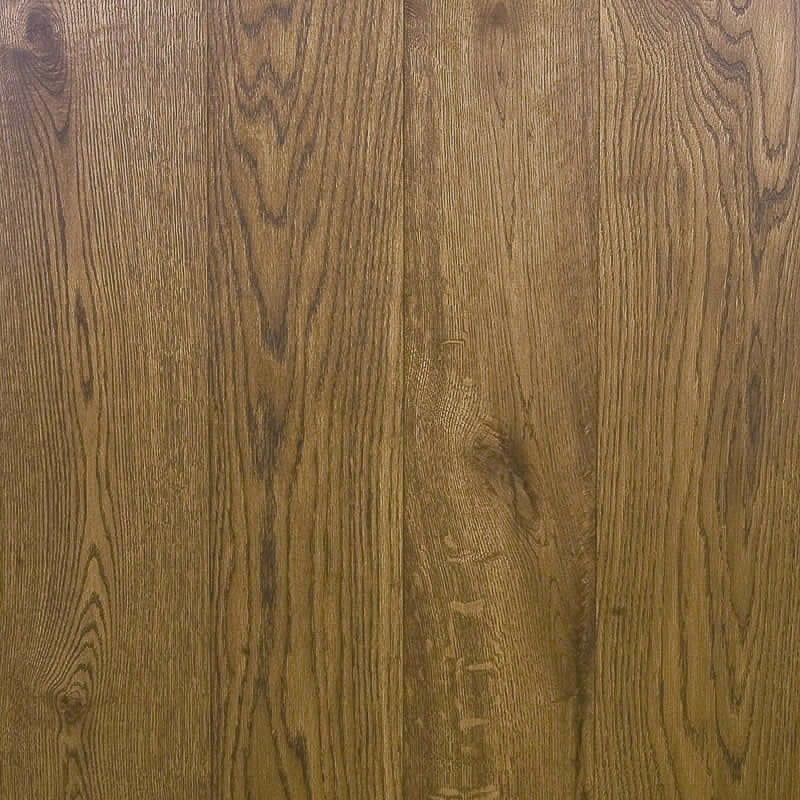How Much Wastage Do You Need to Allow for Wood Flooring?

The inclusion of wastage is standard practice across the wood flooring industry; no one wants the delays and drama of running out of planks at the last minute.

Wastage Percentages
We generally advise wastage of around 10% for planks, and 12-15% for parquets, such as Herringbone or Chevron. Parquet wood flooring requires extra wastage because the constraints of the pattern and size of the blocks limit your ability to use off-cuts.
For reclaimed timber products, we advise a higher percentage of wastage of around 15-20%. Having this extra material is particularly important if you need to cut back to fit directly over joists or battens. Due to the nature of reclaimed timber, there’s also likely to be some sections of board with more significant imperfections than you’d find in new planks.
The amount of wastage will vary depending on a variety of factors, but these percentages are based on many years of fitting experience and should be enough to cover most circumstances.

Why Do We Need to Add Wastage to Your Order?
A degree of cutting and reconfiguring is always necessary when it comes to fitting wood flooring. As rooms come in all shapes and sizes, there’s no one-size-fits-all approach to laying wood flooring. During the fitting process your planks will need to be cut specifically to fit your floor space. In most cases it’s unfeasible to figure out the exact amount of wastage until the fitter is on site.
Cutting: Board Length
You’ll always need to make cuts to start and end each run. Fitters will always try their best to lay the flooring as efficiently as possible, making best use of cut boards wherever they can. The boards that are cut one end can often be used to start the next row; sometimes, however, there will be cut boards which you can’t use in laying the rest of the floor.
For that authentic traditional wood flooring look, you’ll want to stagger the joints of the boards across the floor. To stagger your planks, you’ll want to cut the starting plank of each row shorter. With mixed length wood flooring, you may be able to make use of some of the shorter boards in the pack to start runs, but there will still be cuts required in many cases. The end planks in each row will rarely be a perfect fit either, so you’ll probably need cut them too. All of these cuts create waste.

Cutting: Board Width
Unless the combined board widths fit exactly with the width of the room — which is unlikely to be the case — a whole run of the planks may need to be cut narrower to fit the space. You’ll probably want to do this on both sides of the room to make it symmetrical.
As an example, imagine you’re fitting 220mm wide planks and you have a room 10 metres long. Due to the width of the room, you end up with a gap of 60mm at the edges. In this case you’d need to cut a 10 metre run of boards down to 60mm wide to fill that gap. That would mean you have to discard 160mm of plank on that 10 linear metre run of 220mm wide boards — that’s 1.6m2. If you need to do that on both sides of the room, it’ll be double that (3.2 m2).
Shape of the Room
The amount of wastage you’ll need will also depend on the shape of the room. Simple square or rectangular rooms may have very little wastage. Of course, this still depends on the dimensions of your room and the boards you’re fitting.
If the room is more irregular in shape and there are lots of corners, alcoves, and difficult angles, you will need to make extra cuts to fit your wood flooring. This will inevitably cause more wastage.

Unusual Configurations
Less common wood flooring configurations, such as running boards diagonally, will also require more wastage due to the additional angle cuts that need to be made.
Fitting Experience
Wastage also allows for a small amount of cutting errors. Inexperienced flooring fitters are likely to need more wastage than seasoned professionals. That said, even the most experienced fitters can still make mistakes — they’re only human.
Aesthetics: The Opportunity For a More Selective Approach
Having the right amount of wastage included in your wood flooring order may also allow you to be more selective with the boards you use. For example, if you have some extra boards to play with, it’s easier to mix up the different wood tones as you prefer. If you have character grade wood flooring, it also gives you the option to discard the odd board or cut out a section of it if you think it has too much ‘character’. Having extra material might give you the luxury of choice if you don’t particularly like the grain pattern or imperfections in a particular board.

